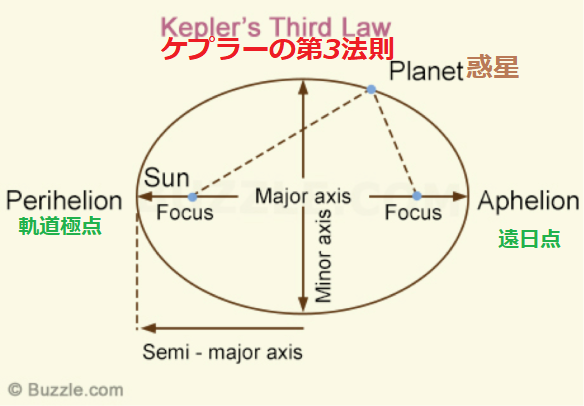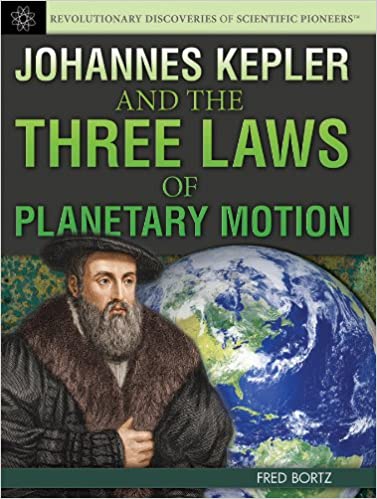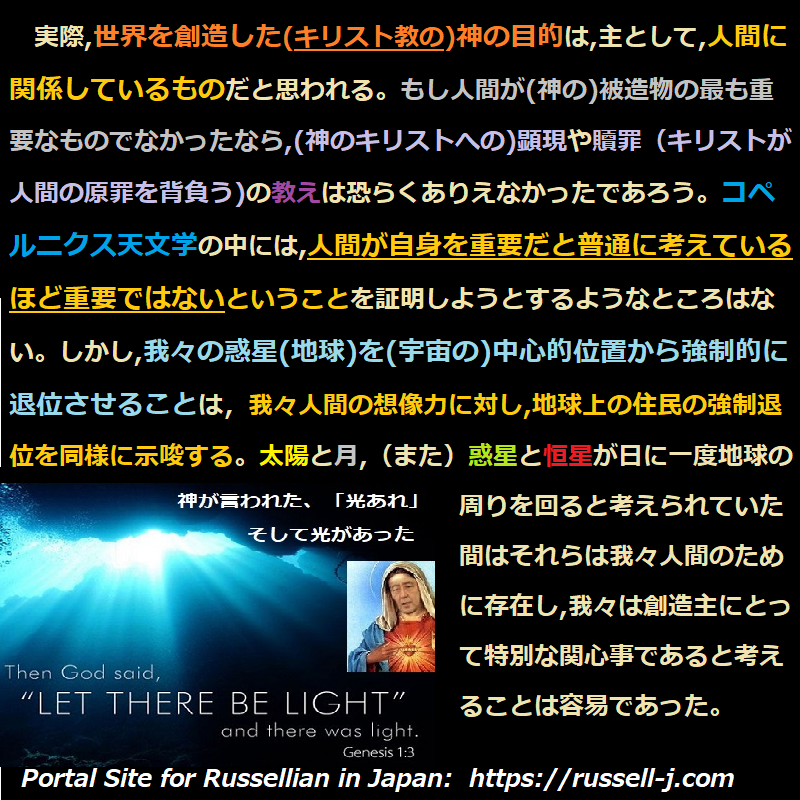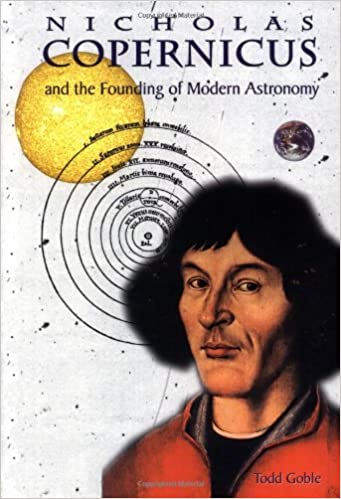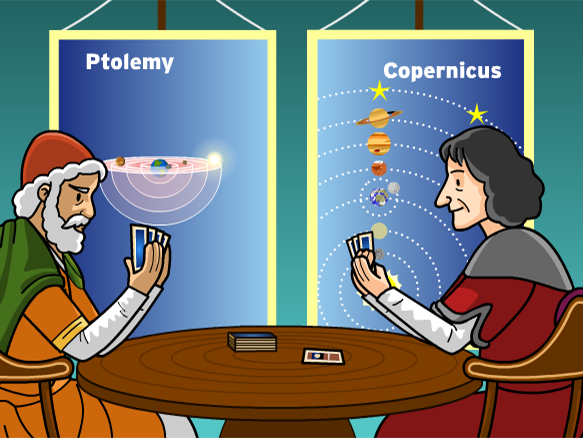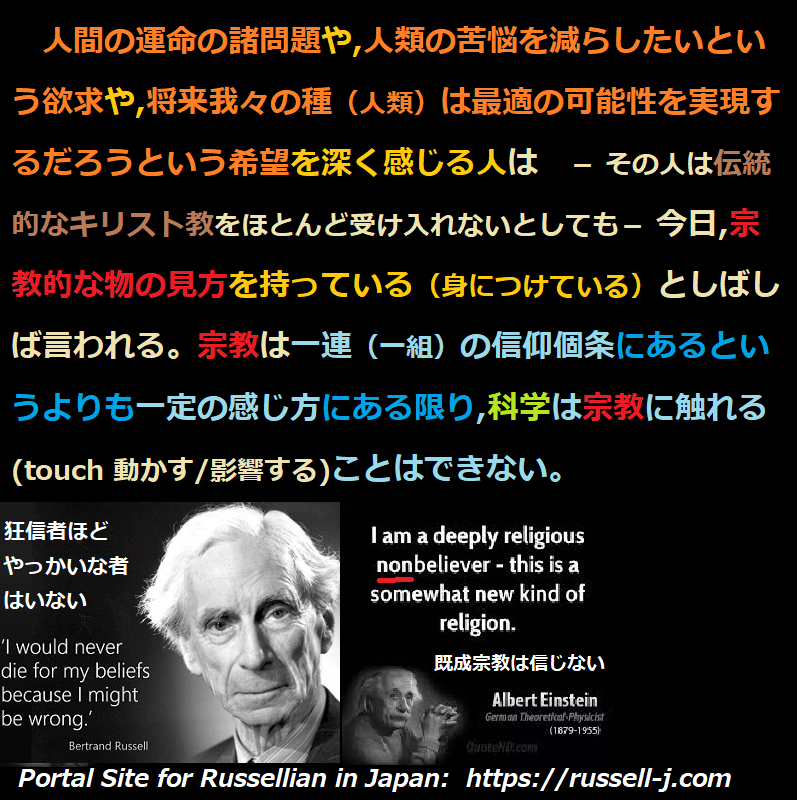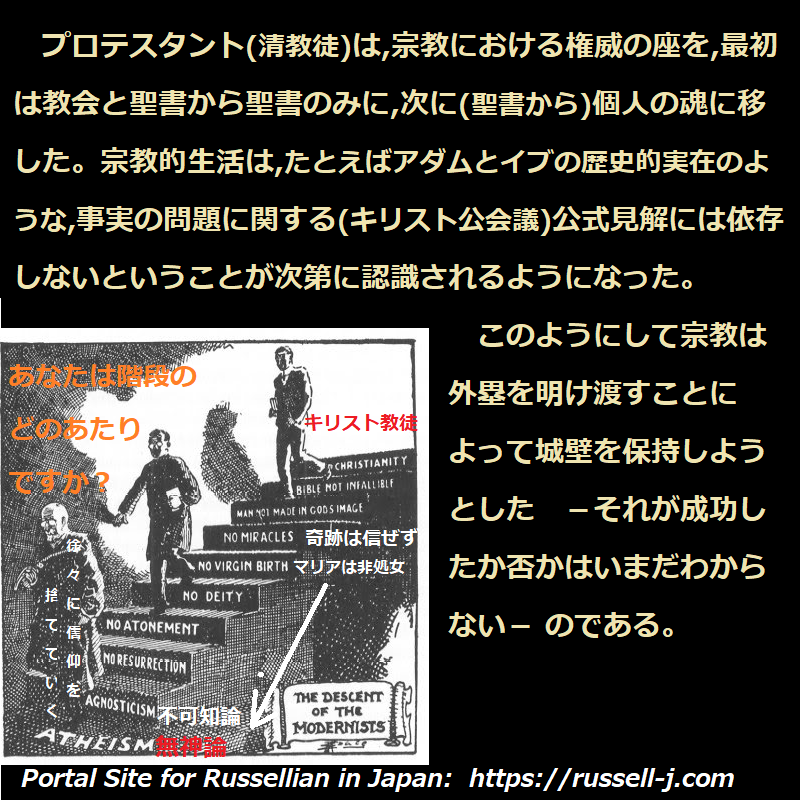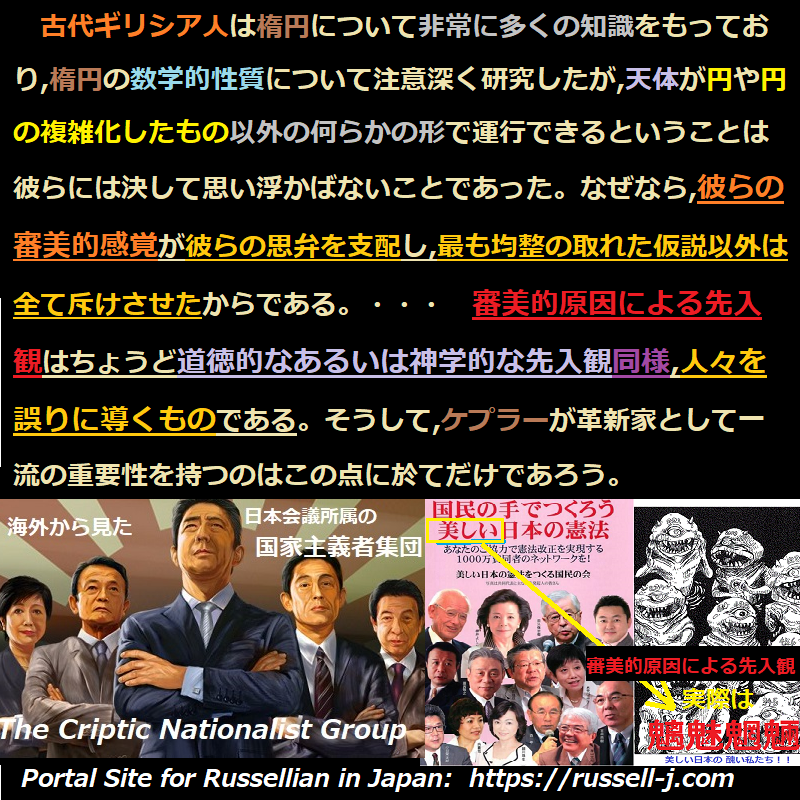
ケプラーの法則のなかの最初の二つ(の法則)は1609年に,3つ目(第三法則)は1619年に,発表された。三つの法則のなかで最も重要なものは -(我々の)太陽系を一般的に描くという観点から言えば- 第一法則であり,第一法則は,惑星は太陽の周りを楕円をなして(in ellipses)周り,太陽はその楕円の焦点のひとつを占めているということを,述べている。(楕円を描くためには,二本のピンを -たとえば一インチ離して- 紙に刺し,次に,1本の糸をとりだし -たとえば長さ二インチのもの- その二つの端を二つのピンに結ぶ(くくりつける)。(そうすると)張った糸(the string taut)を引っ張ることによって達せられる全ての点は二つのピンが焦点である楕円の上にある(ことになる)。即ち,楕円は,一つの焦点からの距離をもう一つの焦点からの距離に足せば(加えれば)常に同じ合計(の長さ)が得られるような全ての点から成っている)。古代ギリシア人は,最初は,円は最も完全な曲線であることから,天体は円をなして運行しなければならないと想定した(仮定した)。この仮説がうまくいかないということに気づくと,彼らは惑星は「周転円(epicycles)」(注:回転するある円の円周上に中心をもって回転している小円)を描いて運行するという見解を採用した。周転円とは,それ自身が円を描いて回転する点の周りの円(の集合)である。(周転円を作るには大きな輪をとりだし地面に置く。次に,縁に釘のついたそれより小さな輸をとりだし,小さい環を大きな輪の周りを回転させ、その間,小さい環の釘は地面を引っかく。地面に釘でひっかいた跡が周転円である。もし,地球が太陽の周りを円を描いて運行し,月が地球の周りを円を描いて運行するならば,月は太陽の周りを周転円を描いて運行するだろう)。古代ギリシア人は楕円について非常に多くの知識をもっており,楕円の数学的性質について注意深く研究したが,天体が円や円の複雑化したもの以外の何らかの形で運行できるということは彼らには決して思い浮かばないことであった。なぜなら,彼らの審美的感覚が彼らの思弁を支配し,最も均整の取れた仮説以外は全て斥けさせたからである。スコラ学者達も古代ギリシア人の偏見を受け継いでいた。ケプラーはこの点で彼らに敢て反対した最初の人であった。審美的原因による先入観は,ちょうど道徳的なあるいは神学的な先入観同様,人々を誤りに導くものである。そうして,ケプラーが革新家として一流の重要性を持つのは,この点に於てだけであろう。けれども,彼のケプラーの三法則は,ニュートンの引力の法則(万有引力の法則)に証拠を与えたという理由で,科学史上において,別の(もうひとつの),またより大きな位置を占めている。
Chapter 2: The Copernican Revolution, n.7
The first two of Kepler’s laws were published in 1609, the third in 1619. The most important of the three, from the point of view of our general picture of the solar system, was the first, which stated that the planets revolve about the sun in ellipses of which the sun occupies one focus. (To draw an ellipse, stick two pins into a piece of paper, say an inch apart, then take a string, say two inches long, and fasten its two ends to the two pins. All the points that can be reached by drawing the string taut are on an ellipse of which the two pins are the foci. That is to say, an ellipse consists of all the points such that, if you add the distance from one focus to the distance from the other focus, you always get the same amount.) The Greeks had supposed, at first, that all the heavenly bodies must move in circles, because the circle is the most perfect curve. When they found that this hypothesis would not work, they adopted the view that the planets move in “epicycles,” which are circles about a point that is itself moving in a circle. (To make an epicycle, take a large wheel and put it on the ground, then take a smaller wheel with a nail in the rim, and let the small wheel roll round the big wheel while the nail scratches the ground. The mark traced by the nail on the ground is an epicycle. If the earth moved in a circle round the sun, and the moon moved in a circle round the earth, the moon would move in an epicycle round the sun.) Although the Greeks knew a great deal about ellipses, and had carefully studied their mathematical properties, it never occurred to them as possible that the heavenly bodies could move in anything but circles or complications of circles, because their aesthetic sense dominated their speculations and made them reject all but the most symmetrical hypotheses. The scholastics had inherited the prejudices of the Greeks, and Kepler was the first who ventured to go against them in this respect. Preconceptions that have an aesthetic origin are just as misleading as those that are moral or theological, and on this ground alone Kepler would be an innovator of first-rate importance. His three laws, however, have another and a greater place in the history of science, since they afforded the proof of Newton’s law of gravitation.
出典:Religion and Science, 1935, chapt. 2.
情報源:https://russell-j.com/beginner/RS1935_02-070.HTM

